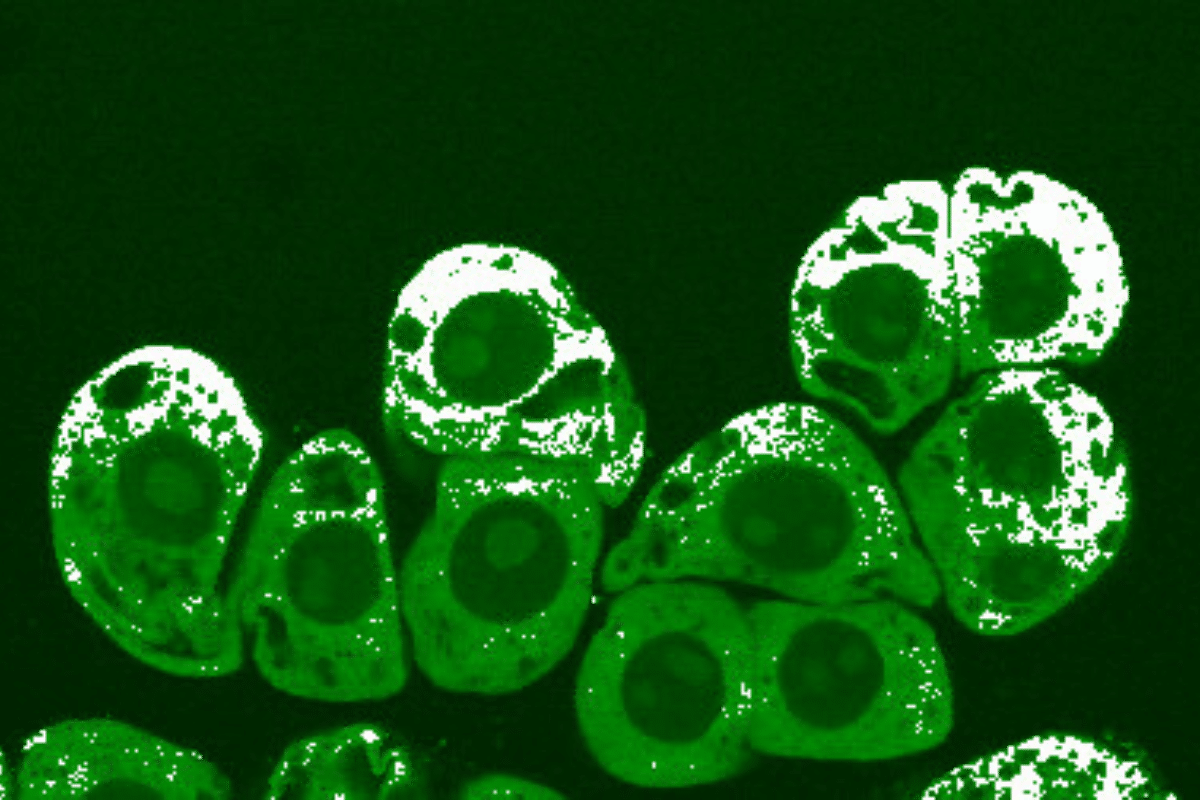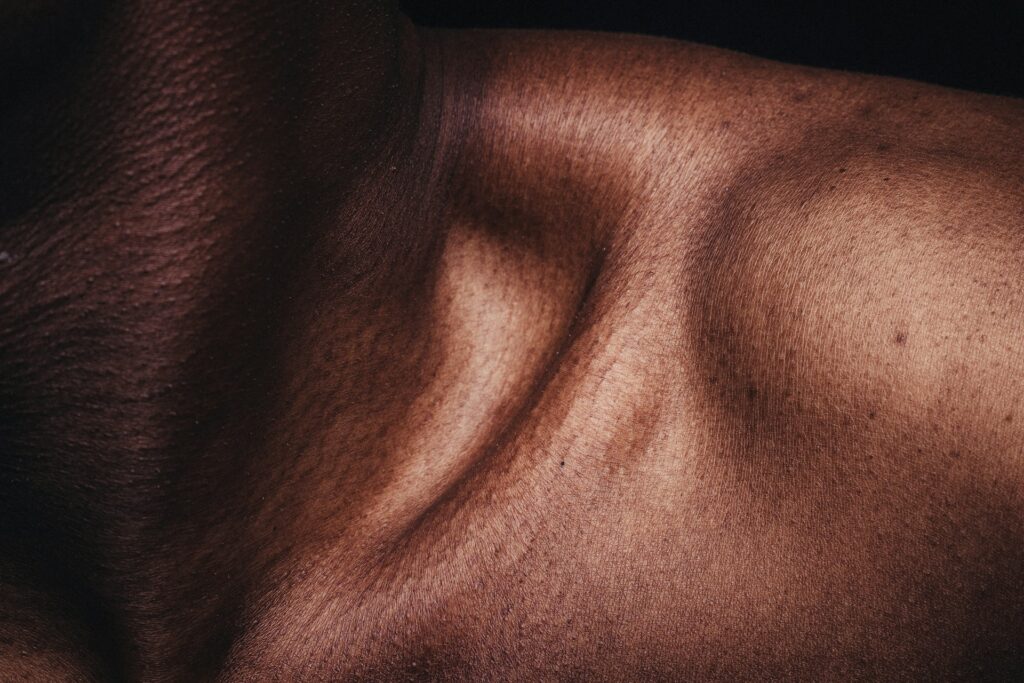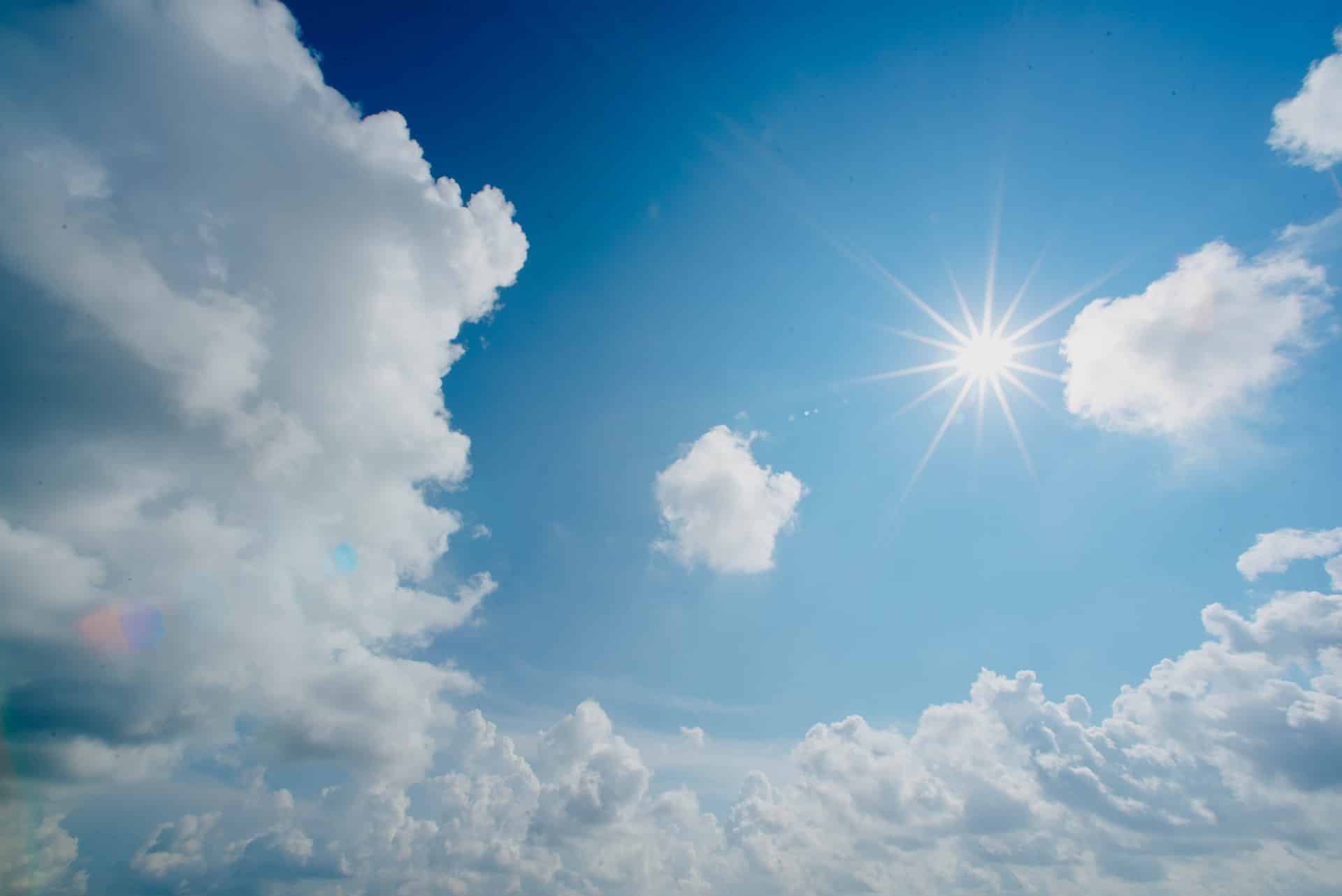The first time we addressed this was back in 2019, after we came across a remarkable article in Outside Magazine titled Is Sunscreen the New Margarine?
In that article, dermatologist and researcher Richard Weller provides compelling evidence regarding the sun’s unique ability to reduce blood pressure. The health benefits of a stable blood pressure are many, including a decreased risk of stroke, kidney disease, and a host of other maladies, most of which are chronic, have no cure, and will lead to death. But the health benefits of sun exposure have been overshadowed, in his view, by warnings from the medical community about the horrors of skin cancer.
He acknowledges that skin cancer is a very real issue, and that sunlight exposure is absolutely a risk factor. But the relationship between elevated blood pressures and mortality is, on orders of magnitude, the far greater public health problem.
If sun exposure can address this, why not more fully explore the connection?
We’ll get to why not, and it’s kind of disturbing. But first we’re going to take a deep dive into the science behind Dr. Weller’s research.
Nitric Oxide

This story starts in 1998 when a pharmacologist researching the effects of nitroglycerin on lowering blood pressure hypothesized that it did so by signaling the release of a molecule called nitric oxide. His name was Ferid Murad and he was right. The gaps in his research were filled in by two more scientists and they won the Nobel Prize.
Perhaps of specific interest to the Dust and Tribe audience, Ferid’s father was an Albanian Muslim immigrant to America. He was pushing 40 when he met Ferid’s mother, a 17 year-old Baptist runaway. Ferid was raised Catholic but later baptized as Episcopalian. Quite the religious roller-coaster, but here’s the moral of this side-story:
Age-gap relationships can produce Noble Prize laureates, but marrying outside your faith is a ticket to generational apostasy.
Take the good with the bad, I guess.
Anywho, these three men established that nitric oxide relaxes the smooth muscles of blood vessels which allows them to dilate. Just like putting your thumb over the end of a hose will narrow the opening and cause the water to fly out with greater pressure, nitric oxide is the equivalent of releasing your thumb and restoring a nice, mellow flow. That’s what we want, because if our blood is forced through our circulatory system at thumb-over-hose pressures, over time we’ll end up blowing holes in things like the tiny, fragile blood vessels in our eyes and brain, or the ultra-fine filters in our kidneys.
These are all terrible things we don’t want happening.
We’ve talked about nitric oxide before, when we wrote about The Hidden Dangers of Fresh Breath. That’s worth a read, but the upshot is that frequent use of mouthwash has been correlated with an increased risk of diabetes. It is hypothesized that mouthwash kills the microbes that function to liberate stores of nitric oxide in our salivary glands. Without these microbes, we can’t move the nitric oxide into our circulatory system, so we end up with higher blood pressures that may compromise the release of insulin from our pancreas and you end up a minty-mouthed diabetic.
A lot of this goes back to Dr. Murad and his Nobel Prize, but there was speculation about nitric oxide being something special even before this, as in this 1997 paper from Japan where it was noticed that breathing in through the nose resulted in the exhalation of way more nitric oxide. The implication here is that nasal breathing may increase the systemic availability of nitric oxide which, as we now know, is linked to lower blood pressures.
And while yogis everywhere may rejoice at the validation, Big Pharma was equally excited. They immediately went to work marketing Viagra, the blockbuster ED drug taking advantage of specific nitric oxide pathways and approved for use by the FDA the same year that Murad won his Nobel Prize.
If you haven’t recognized it by now, nitric oxide is a very big deal. We get it into our bodies through the foods we eat (shout out to beets and spinach!) but it is often bound up in forms that require a little extra consideration for us to adequately liberate.
And so we stop our regular use of mouthwash. We breathe more intentionally through our noses. And, according to dermatologist Richard Weller, we get outside and into the sun.
Skin

The late 90s was a big moment for nitric oxide because in 1996, two years before Murad, the Nobel Prize, and Viagra, dermatologist Richard Weller described how our skin, the largest organ of the human body, is apparently a massive repository of the stuff, although in forms that are chemically bound up and unusable. But similar to the mouthwash situation, he theorized that the nitric oxide found on skin is generated through the activity of hosted microbes interacting with our sweat.
In a 2012 TedX talk, Dr. Weller offers compelling evidence for his belief that sunlight interacts with these inaccessible forms of nitrous oxide to liberate it into our blood stream where we can benefit from its relaxing effect upon our circulatory system. He admirably dismisses the idea that supplemental vitamin D, for all of its benefits, might have anything to do with this and leaves us quite convinced that the real alchemy here is solar ultraviolet light disentangling the chemical bonds sewn up by friendly bugs responding to our sweat.
Listening to him, we can’t help but acknowledge the beauty and elegance of how our vitality is so interdependent with the world beyond our selves.
But it’s not just any ultraviolet light.
It’s got to be UVA specifically, as noted in this paper by Dr. Donald Liu and a whole host of others (including Weller). The sample size was small and the participants in the study were pretty healthy, but this collection of dermatologists found compelling correlations between sunlight, nitric oxide, and measurable changes to blood pressure with significant public health implications:
High latitude countries such as Scotland carry a heavy burden of cardiovascular and cerebrovascular disease, and this has persisted despite interventions taken to reduce other risk factors. Concerns over rising rates of melanoma and non-melanoma skin cancers, for which excess sunlight is a risk factor, have led to advice on minimizing exposure to sunlight and maximizing the use of sunblock. Age-standardized melanoma mortality is much lower than that from cardiovascular disease (CVD) or cerebrovascular disease (2.6 vs. 112.5 vs. 59.5/100,000 per year in 2008).
We are concerned that well meaning advice to reduce the comparatively low numbers of deaths from skin cancer may inadvertently increase the risk of death from far higher prevalent CVD and stroke, and goes against epidemiological data showing that sunlight exposure reduces all-cause and cardiovascular mortality.
Liu et al., 2012
This is all perfectly good science. Nothing here is overstated.
Sun exposure results in a directly observable reduction in blood pressure. This has a number of physiological and emotional benefits.
Sun exposure does not cause skin cancer, though it is a risk factor.
Pelle Lindqvist, a senior research fellow in obstetrics and gynecology at Sweden’s Karolinska Institute, home of the Nobel Prize in Physiology or Medicine, tracked the sunbathing habits of nearly 30,000 women in Sweden over 20 years. And yes, those who spent more time outside were more likely to get melanoma, but they were eight times less likely to die from it.
However, those who avoided the sun were twice as likely to die in the same time period compared to those who enjoyed regular exposure.
The observations are followed by a reasonable question:
If, out of 100,000 people, three die from skin cancer every year and 172 die from some form of vascular disease that could have been prevented through sun exposure, is our insistence on the use of sunscreen causing more harm than good?
Race Matters

Dr. Weller has traveled to Ethiopia for more than 12 years and in all of his clinical work he has not seen a single case of skin cancer, “We do not see UV induced skin cancer there.” He goes on to share that white-skinned people, with their relative lack of melanin, are disproportionately affected by UV-induced skin cancers and sun aging, and that both of these are believed to be a function of burning and not merely exposure. This is widely backed by research and not controversial in the least.
Scientists and public health officials are also well aware of the disproportionate levels of hypertension within the Black American population:
The racial disparity in hypertension and hypertension-related outcomes has been recognized for decades with African Americans with greater risks than Caucasians. Blood pressure levels have consistently been higher for African Americans with an earlier onset of hypertension. While awareness and treatment levels of high blood pressure have been similar, racial differences in control rates are evident. The higher blood pressure levels for African Americans are associated with higher rates of stroke, end-stage renal disease and congestive heart failure.
Lackland
Despite this knowledge and a recognition that Black Americans are 30 times less likely to develop skin cancer than non-Hispanic whites, our dark-skinned brothers and sisters are still told to put sunscreen on everyday. They are not told how their exquisitely unique skin tone allows for more UV light exposure which facilitates greater levels of nitric oxide release with its demonstrated potential to reduce hypertension, the very thing killing them in droves. Worse, some within the Black American community have ignored the physiological big picture and have comodified the melanoma fear-mongering to market targeted products.
The American Academy of Dermatology elevates the fear-mongering to full-blown gaslighting, describing sunlight and UV exposure in exclusively negative terms:
Sunlight consists of two types of harmful rays that reach the earth — UVA rays and UVB rays. Overexposure to either can lead to skin cancer. In addition to causing skin cancer, here’s what each of these rays does:
- UVA rays (or aging rays) can prematurely age your skin, causing wrinkles and age spots, and can pass through window glass.
- UVB rays (or burning rays) are the primary cause of sunburn and are blocked by window glass.
The United States Department of Health & Human Services and the World Health Organization’s International Agency of Research on Cancer have declared UV radiation from the sun and artificial sources, such as tanning beds and sun lamps, as a known carcinogen (cancer-causing substance).
Notice the complete disregard for any potential benefit of sunlight. The sun is a carcinogen. There are only two rays and they will kill you, or else make you really ugly.
At this point we should all be asking ourselves why the obvious benefits of sunlight are being completely dismissed and even obscured by mainstream dermatologists, the cosmetics industry, and public health advocates?
Antisemitism?

We aren’t sure why mainstream public health advocates hate the sun. We suspect capitalism, but it gets weirder.
As we were researching this post, we came across the Conspirtuality podcast, a program for skeptics bent on “dismantling New Age cults, wellness grifters, and conspiracy-mad yogis.” Listening to their sunscreen episode, however, revealed something entirely different. Rather than a critical analysis of the science of sun exposure, there were only speculative attacks on any position that deviated from the mainstream advice of “sunscreen all day everyday” by what had to be the most absurdly biased commentators imaginable.
One of these was Michelle Wong, a cosmetic chemist. She defends the formulation of sunscreens as being ultimately safe, which, as a chemist, she is certainly qualified to do. Absent from her commentary, however, is any discussion of the research around the benefits of sunlight. In keeping with the position of the American Academy of Dermatology, her message is that the sun is to be avoided at all costs.
The other commentator was extra special.
Listeners get to hear from Sara Aniano, a “disinformation specialist” who works with the Anti-Defamation League, an Israeli special-interest group with the rabid agenda of linking anything and everything to Jewish Hate. She is less interested in the anti-sunscreen camp, finding that the real threat to Jews is in the “pro-sun” movement.
You can hear what she has to say on the Conspirituality podcast at around the 22-minute mark, but we’ll quote her from another article to give you an idea of where she’s coming from:
. . . her biggest concern about the pro-sun movement is: “Once you stop believing in sunscreen, and stop attributing skin cancer to sun exposure, and think Big Pharma is lying and all authority is lying, you’re flirting with dangerous discourse there.” She often sees beauty influencers on TikTok start conversations around mineral versus chemical sunscreens as an entry point to talk about which chemicals and toxins are evil. “They can build clout off of it and use it as an opportunity to indoctrinate,” Aniano says.
And this indoctrination ultimately leads to antisemitism, of course.
She gets paid to do this.
Imagine that.
Imagine that your livelihood is reframing the universe in the service of advancing and weaponizing your victim complex.
And imagine arriving at the conclusion that the sun hates Jews.
Conclusions

Sunlight is not intrinsically harmful. It should come as no surprise to anybody that life on our planet depends on it. Humanity has lived with the sun for the entirety of our existence.
However, there are modern behaviors that have changed our relationship with the sun. Historically, people spent time outside year round, with exposure to the seasonal waxing and waning of sunlight exquisitely modulating our production of melanin allowing for just the right amount of biological protection at any given time. In virtually all cultures, that protection was enhanced when necessary with clothing, shelter, and the application of pulverized minerals to reflect sunlight.
What has changed is our migration indoors where we now spend most, if not all of our time in climate controlled, artificially illuminated dungeons.
The lack of sun exposure retards our melanin production and destroys our primary biological defense. Our risk of burning therefore becomes much greater when we do venture outside. We are then forced to overcompensate with the application of sunscreens that obliterate our opportunity to actually benefit from the sun liberating those nitric oxide stores in our skin that are so essential for optimizing our circulation.
Our issue with the sunscreen advocates is their refusal to see sunlight as anything but harmful and skin cancer as anything other than a consequence of sun exposure.
Our position is that skin cancer is a symptom of a radically imbalanced lifestyle where getting outside is only something that happens in fits and starts, often in swimwear during the hottest part of the year with the low intention of accruing a fashionable tan.
Don’t do that.
Get outside everyday through every season. It’s free medicine.
Go for a walk. Start a garden. Read a book outside. Take up birdwatching.
You don’t need to expose much skin. Your hands and face and feet are plenty. And you don’t need to be out there forever. Twenty minutes is a fine start. Begin during the cooler months and stay consistent.
Feel the sun and imagine that it loves you.
Unless, according the ADL, you happen to be Jewish.
Leave a comment below for posterity or join us in the D&T Chautaqua Discord to discuss this post with other adventurous spirits from around the world.

Upload your blog to a substack- it’s the place to be these days. Great listen/read.
All the best to you all At Camp 1.
This is the place to be.
We miss you on Discord btw : (